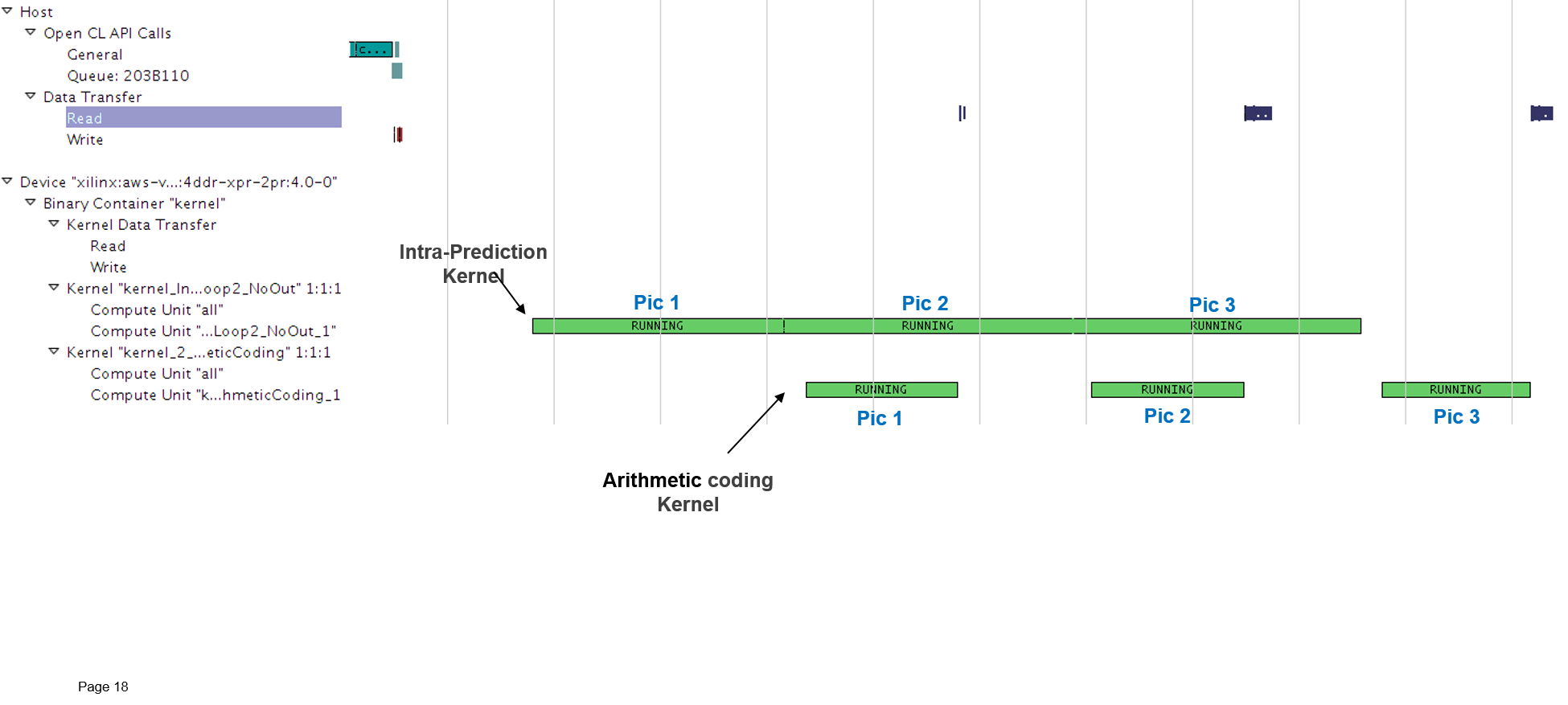WebP Encoder¶
WebP is a new image format developed by Google and supported in Chrome, Opera and Android that is optimized to enable faster and smaller images on the Web. WebP images are about 30% smaller in size compared to PNG and JPEG images at equivalent visual quality. In addition, the WebP image format has feature parity with other formats as well.
Implementation¶
This accelerated WebP encoder project is based on libwebp open source project. For one input picutre (.png), the output picutre (.webp) is achieved after following six steps:

Time-consuming functions are accelerated by 2 FPGA kernels including:
Kernel-1: intra-prediction and probability counting Kernel-2: arithmetic coding
Performance¶
- One instance achieves about 6~14 times acceleration. Here are some examples:
| Pictures | Texture complexity | Width (pix) | Height (pix) | -q | kernel1 latency(ms) | kernel2 latency (ms) | Freq (MHz) | Throughput FPGA U200 (MB/s) | Throughput CPU (MB/s) | Speed up |
| 3840-city.png | complex | 3840 | 2160 | 80 | 95.30 | 87.93 | 250 | 129.82 | 18.46 | 7.03 |
| 1920x1080x4.png | simple | 3840 | 2160 | 80 | 83.90 | 74.96 | 250 | 159.74 | 16.17 | 9.88 |
| 1920x1080.png | simple | 1920 | 1080 | 80 | 21.51 | 18.60 | 250 | 172.54 | 11.85 | 14.56 |
| 853x640.png | simple | 853 | 640 | 80 | 4.13 | 74.96 | 250 | 156.45 | 20.97 | 7.46 |
| lena_c_512.png | middle | 512 | 512 | 80 | 2.90 | 2.84 | 250 | 127.17 | 21.32 | 5.96 |
Platform: CPU: Intel(R) Xeon(R) Gold 6142 CPU @ 2.60GHz (single thread)
- One instance takes about 6% resource of U200 acceleraction card, following is the detail:
| Utilizations | Kernel-1 | Kernel-2 | Kernel-1 + Kernel-2 |
| LUT | 52889 | 15866 | 5.37% |
| FF | 68991 | 23039 | 3.30% |
| DSP | 410 | 4 | 6.00% |
| BRAM | 72 | 157 | 4.00% |
| URAM | 10 | 0 | 2.08% |
- Multi-pictures process. Host code supports multi-pictures process with asynchronous behaviors, which allows to overlap host-device communiations, prediction kernel computation and arithmetic coding kernel computation. This is shown by following demonstration picture and profiling result.


Software and system requirements¶
The following packages are required to run this application: * Xilinx Vitis 2022.1 * GCC 8.x * make * PLATFORM: xilinx_u200_gen3x16_xdma_2_202110_1
Building the accelerated WebP encoder¶
- In a terminal window, execute the following commands to set-up the Vitis environment
cd L2/demos/webpEnc source $XILINX_VITIS/settings64.sh
- Build the accelerated WebP encoder and run software emulation with the following command:
make run TARGET=sw_emu
- Build the accelerated WebP encoder and run hardware emulation with the following command:
make run TARGET=hw_emu
- Build the accelerated WebP encoder for on board execution with the following command:
make run TARGET=hw
- kernel.xclbin and cwebp will generated in directory build_dir.hw.xilinx_u200_gen3x16_xdma_2_202110_1/
Running the accelerated WebP encoder¶
- The cwebp application takes the following arguments:
list.rst is text file lists input pictures, should be equal to "NPicPool" defined in src_syn/vp8_AsyncConfig.h
-use_ocl: should be kept
-q: compression quality
-o: output directory
- Run the accelerated WebP encoder with the following commands:
source /opt/xilinx/xrt/setup.sh ./cwebp -xclbin kernel.xclbin list.rst -use_ocl -q 80 -o ./images/